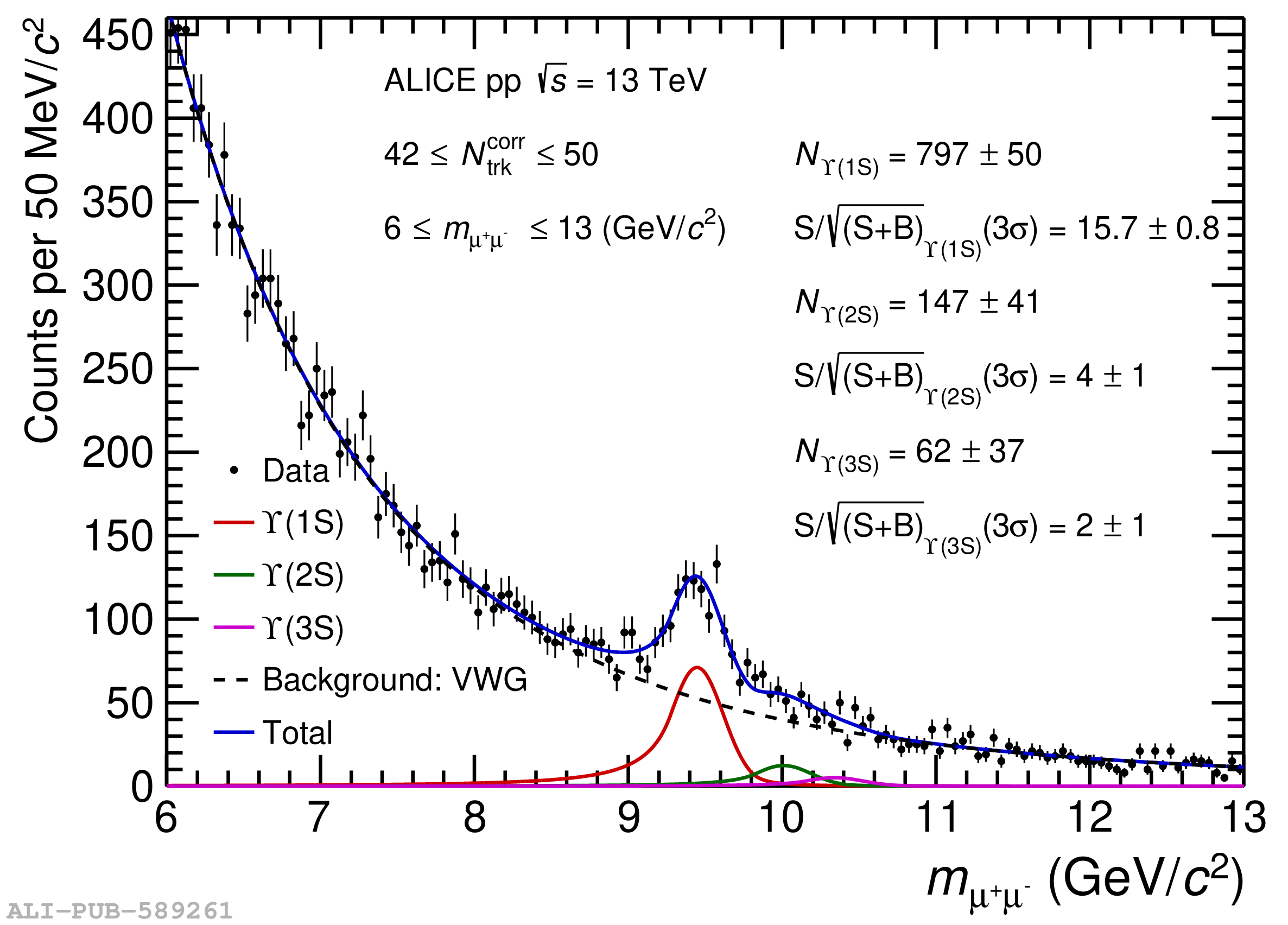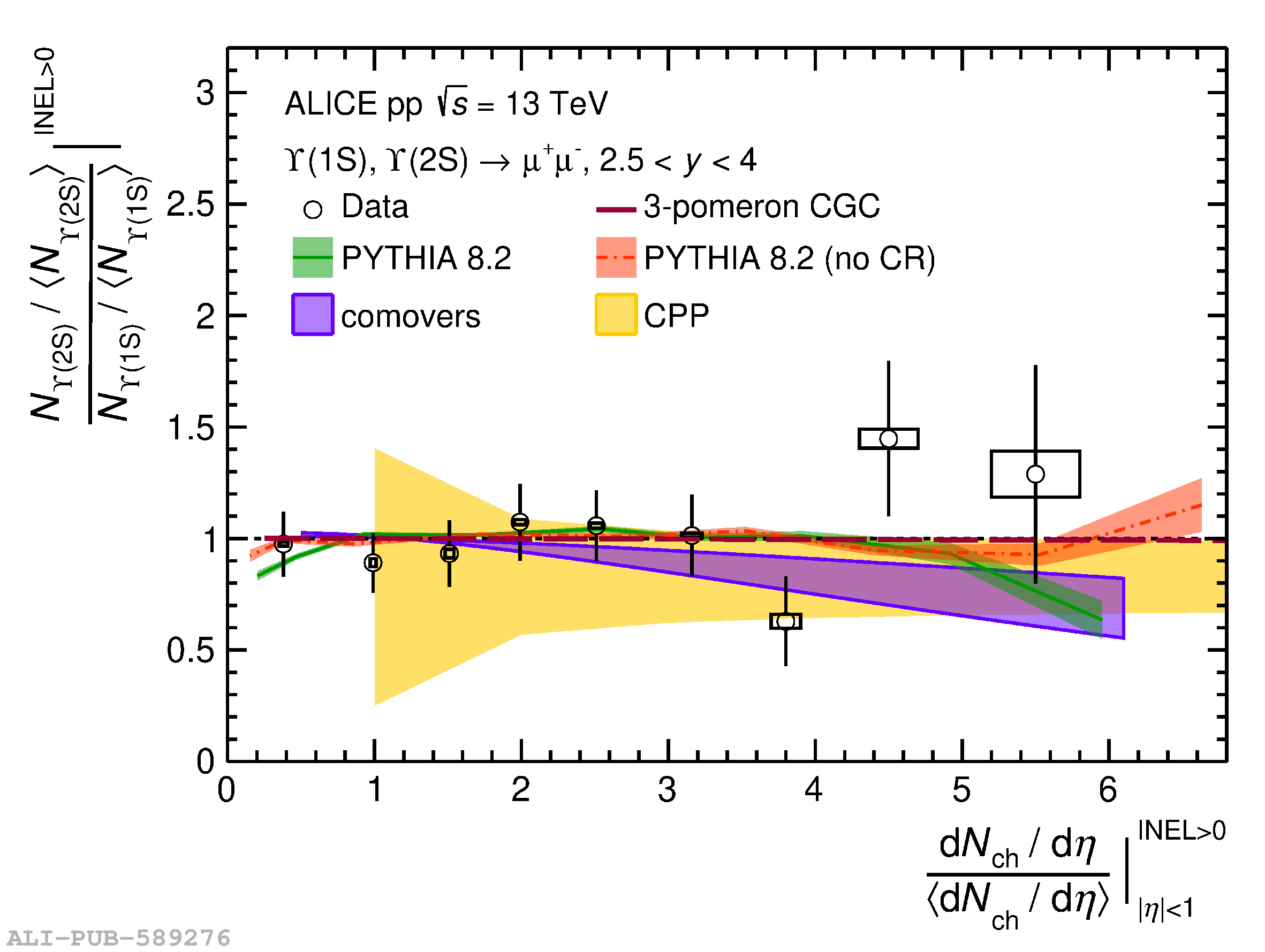The measurement of $\Upsilon$(1S), $\Upsilon$(2S), and $\Upsilon$(3S) yields as a function of the charged-particle multiplicity density, $\textrm{d}N_{\textrm{ch}}/\textrm{d}\eta$, using the ALICE experiment at the LHC, is reported in pp collisions at $\sqrt{s} =$ 13 TeV. The $\Upsilon$ meson yields are measured at forward rapidity ($2.5 <~ y <~ 4$) in the dimuon decay channel, whereas the charged-particle multiplicity is defined at central rapidity ($|\eta| <~ 1$). Both quantities are divided by their average value in minimum bias events to compute the self-normalized quantities. The increase of the self-normalized $\Upsilon$(1S), $\Upsilon$(2S), and $\Upsilon$(3S) yields is found to be compatible with a linear scaling with the self-normalized $\textrm{d}N_{\textrm{ch}}/\textrm{d}\eta$, within the uncertainties. The self-normalized yield ratios of excited-to-ground $\Upsilon$ states are compatible with unity within uncertainties. Similarly, the measured double ratio of the self-normalized $\Upsilon$(1S) to the self-normalized J/$\psi$ yields, both measured at forward rapidity, is compatible with unity for self-normalized charged-particle multiplicities beyond one. The measurements are compared with theoretical predictions incorporating initial or final state effects.
Nucl. Phys. B 1011 (2025) 116786
HEP Data
e-Print: arXiv:2209.04241 | PDF | inSPIRE
CERN-EP-2022-174
Figure group








